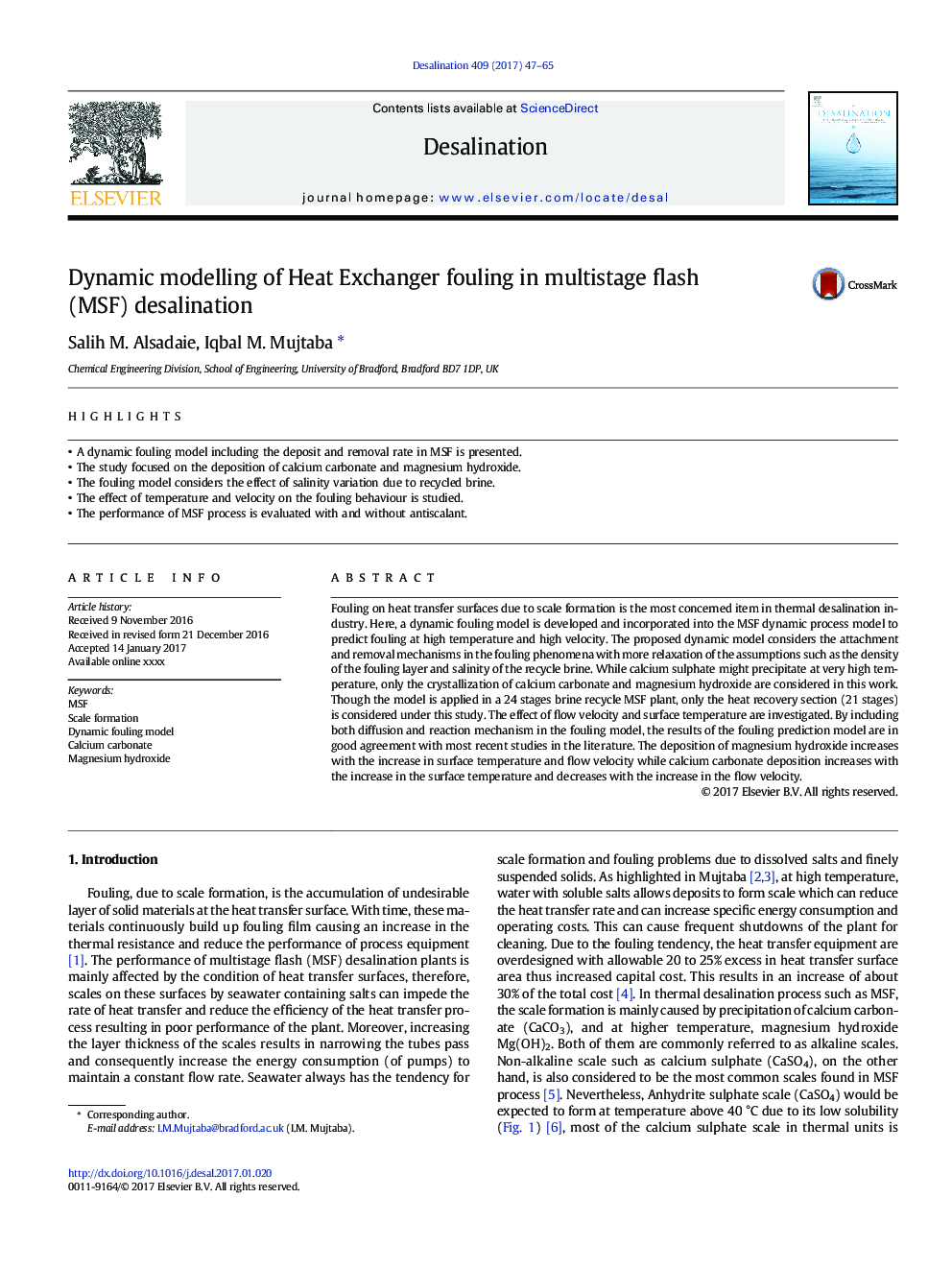| Article ID | Journal | Published Year | Pages | File Type |
|---|---|---|---|---|
| 4987868 | Desalination | 2017 | 19 Pages |
Abstract
Fouling on heat transfer surfaces due to scale formation is the most concerned item in thermal desalination industry. Here, a dynamic fouling model is developed and incorporated into the MSF dynamic process model to predict fouling at high temperature and high velocity. The proposed dynamic model considers the attachment and removal mechanisms in the fouling phenomena with more relaxation of the assumptions such as the density of the fouling layer and salinity of the recycle brine. While calcium sulphate might precipitate at very high temperature, only the crystallization of calcium carbonate and magnesium hydroxide are considered in this work. Though the model is applied in a 24 stages brine recycle MSF plant, only the heat recovery section (21 stages) is considered under this study. The effect of flow velocity and surface temperature are investigated. By including both diffusion and reaction mechanism in the fouling model, the results of the fouling prediction model are in good agreement with most recent studies in the literature. The deposition of magnesium hydroxide increases with the increase in surface temperature and flow velocity while calcium carbonate deposition increases with the increase in the surface temperature and decreases with the increase in the flow velocity.
Related Topics
Physical Sciences and Engineering
Chemical Engineering
Filtration and Separation
Authors
Salih M. Alsadaie, Iqbal M. Mujtaba,
